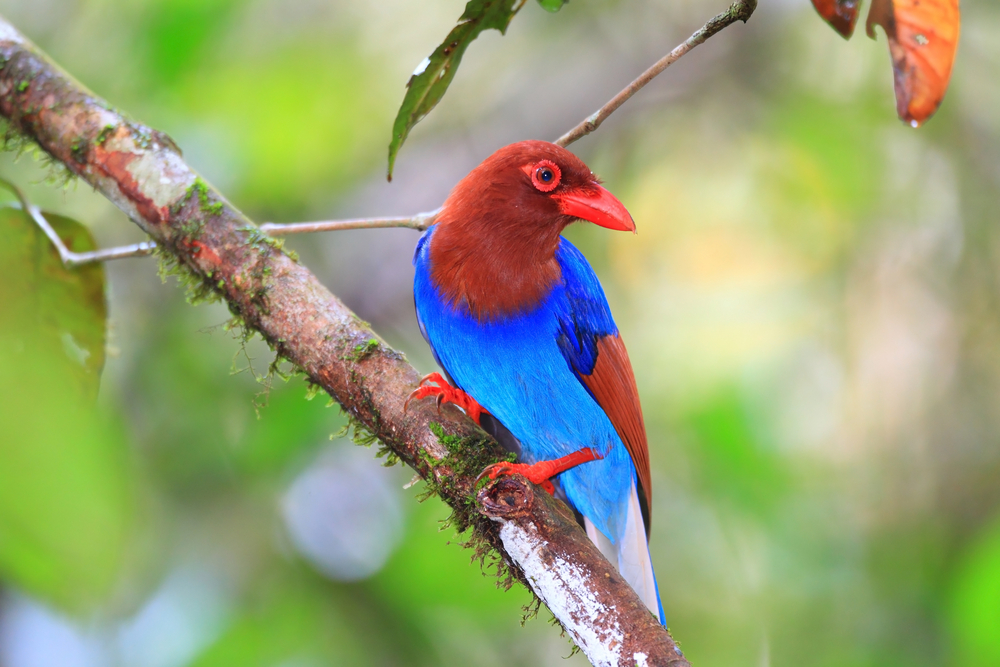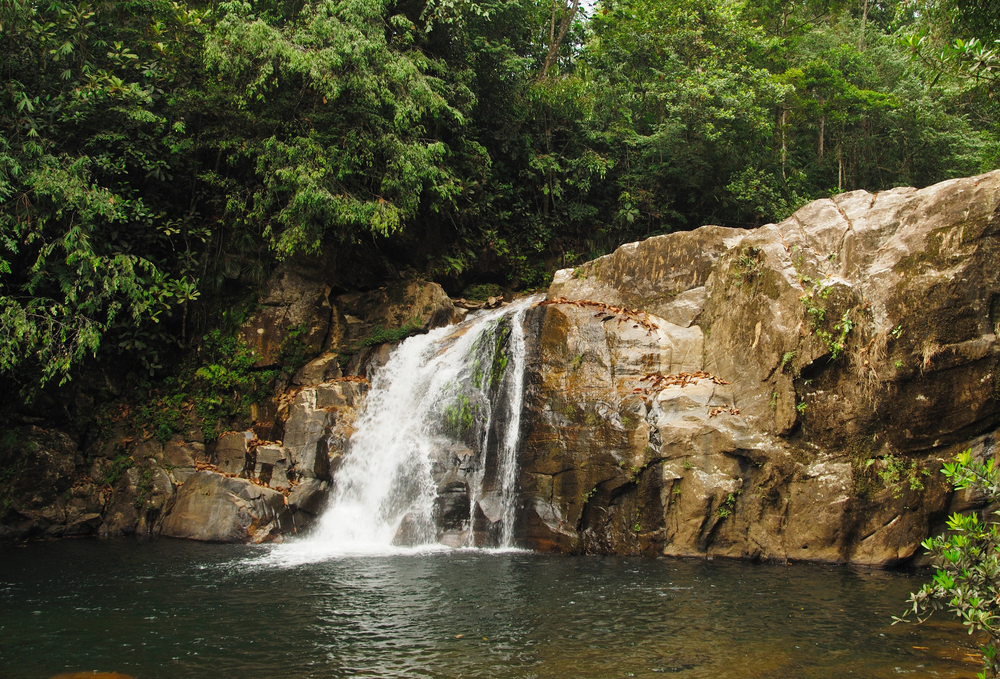Exploring the Biodiversity of Sinharaja Forest

Nestled in the heart of Sri Lanka lies a natural treasure. It’s called the Sinharaja Forest.
A UNESCO World Heritage Site, Sinharaja is a biodiversity hotspot. It’s home to a wealth of endemic species, many of which are found nowhere else on earth.

This forest reserve is a paradise for nature enthusiasts. It offers a unique opportunity to explore a vibrant and diverse ecosystem.
From its dense canopy teeming with life to its lush undergrowth, Sinharaja is a testament to the richness of Sri Lanka’s natural heritage. It’s a living, breathing testament to the country’s commitment to conservation.
In this guide, we’ll delve into the wonders of Sinharaja Forest. We’ll explore its flora and fauna, its role in conservation, and how you can plan your visit.
Join us as we journey into the heart of Sinharaja, exploring the biodiversity of this remarkable forest reserve.
Sinharaja Forest: A UNESCO World Heritage Site
Sinharaja Forest became a UNESCO World Heritage Site in 1988. This recognition highlights its global ecological significance. Its status reflects a commitment to preserving its unique biodiversity.
The forest is the last extensive tract of undisturbed lowland rainforest in Sri Lanka. This makes it invaluable for conservation. Its primary forest has been largely untouched by human activity, safeguarding many endemic species.

Sinharaja’s ecosystem is diverse and complex. It supports an incredible range of plant and animal life. The forest is part of the larger Sri Lanka Lowland Rain Forests ecoregion. This region is one of the world’s most important ecological habitats.
Sinharaja also holds cultural significance. Its name, meaning ‘Lion King,’ is deeply rooted in local folklore and history. This cultural heritage further enhances its importance, drawing visitors interested in both nature and history.
Being a World Heritage Site helps focus conservation efforts. It underscores the need to protect Sinharaja from threats like deforestation and climate change. This designation ensures that future generations can appreciate and study this ecological treasure.
The Rich Ecosystem of Sinharaja Forest Reserve
Sinharaja Forest Reserve is a sanctuary of biodiversity. It harbors over 50% of Sri Lanka’s endemic species. This makes it a vital hotspot for biodiversity conservation.

The forest’s ecosystem is layered and intricate. Different layers support a variety of life forms, from towering trees to ground-dwelling creatures. The lush vegetation makes it a paradise for researchers and nature enthusiasts alike.
Sinharaja’s unique climate contributes to its richness. Regular rainfall nourishes the dense greenery, creating a humid environment. This allows many rare species to thrive.
Key Features of Sinharaja’s Ecosystem
- Endemic Species: Hosts 60% of Sri Lanka’s endemic trees and plants.
- Water Systems: Bounded by significant rivers like the Gin Ganga and Kalu Ganga.
- Canopy Layers: Home to epiphytes, lianas, and multiple vegetation layers.
The forest’s terrain is rugged and hilly, providing diverse habitats. These range from wet lowlands to cool highlands. Visitors can explore this varied landscape on numerous trails.
Sinharaja’s rich soil further enhances its biodiversity. It supports a wide array of plant species, including medicinal plants. Its soil stabilization and water purification roles are invaluable for the surrounding communities.
Flora: The Green Heart of Sinharaja
Sinharaja’s flora is remarkably diverse and abundant. It is a sanctuary for over 60% of the country’s endemic trees. The forest’s green canopy teems with life.
The layers of the forest support a myriad of plants. These range from towering giants to smaller shrubs and ferns. The varied flora forms complex ecosystems teeming with biodiversity.

Epiphytes are a highlight of Sinharaja’s botanical life. These plants, including orchids, cling to larger trees in the canopy. Their vibrant presence enriches the forest’s aesthetic and ecological value.
The forest’s greenery is essential for conservation. It acts as a natural carbon sink, contributing to climate regulation. Sinharaja’s flora is crucial not only for beauty but for ecological balance.
Fauna: The Diverse Inhabitants of the Forest
Sinharaja is home to a multitude of animal species. This includes many mammals, reptiles, and amphibians. The forest provides crucial habitats for these creatures.

The diverse fauna adds to Sinharaja’s ecological richness. Leopards and purple-faced langurs are among the iconic residents. These creatures are a key attraction for wildlife enthusiasts.
Sinharaja also supports a variety of reptiles. Endemic frog species thrive in its humid environment. Its streams and ponds are vibrant microhabitats.
Butterflies and moths add color to Sinharaja’s landscape. Over half of Sri Lanka’s endemic butterflies are found here. Their vibrant patterns dance through the forest’s greenery.

The forest’s mammalian diversity is significant. From elephants to smaller mammals, Sinharaja’s fauna is diverse. Conservation efforts ensure these species continue to thrive.
Avian Wonders: Birdwatching in Sinharaja
Birdwatching in Sinharaja is a spectacular experience. The forest is an Important Bird Area (IBA), hosting numerous species. Many of these birds are endemic to Sri Lanka.
The Sri Lanka Blue Magpie and Red-faced Malkoha are highlights. These vibrant birds capture the attention of visitors. Sinharaja’s birdlife offers a unique glimpse into avian diversity.

Mixed-species feeding flocks are a fascinating phenomenon here. Birdwatchers can witness different species feeding together. This rare interaction adds to Sinharaja’s allure.
Sinharaja offers a rich tapestry of birdlife. The forest is a haven for bird enthusiasts, with species like the Green-billed Coucal. Its rich avifauna underscores the need for ongoing conservation.
Birdwatching here is an unforgettable experience. The diverse birdlife of Sinharaja captures the essence of nature’s beauty. It’s a must-visit for anyone interested in ecology and avian wonders.
Sinharaja’s Role in Conservation and Research
Sinharaja Forest plays a pivotal role in conservation efforts. As Sri Lanka’s last primary tropical rainforest, it holds immense ecological value. This makes it a focal point for biodiversity preservation initiatives.
The forest is not just a conservation site but a living laboratory. Researchers study its rich ecosystems to understand tropical biodiversity. These studies contribute to global ecological knowledge and conservation strategies.
Sinharaja’s conservation importance extends to the global stage. It represents Sri Lanka’s commitment to the Convention on Biological Diversity. This recognition underlines the forest’s essential role in protecting global biodiversity.
Educational facilities within Sinharaja enhance its research value. They provide opportunities for scientists and students to study ecological processes. Such initiatives help foster a deeper appreciation and understanding of tropical rainforests. By engaging local communities in conservation, Sinharaja also promotes sustainable practices. This ensures the forest remains a thriving natural habitat for future generations.
Planning Your Visit to Sinharaja Forest Reserve
Sinharaja Forest Reserve is an enriching destination for nature lovers. Planning your visit can greatly enhance your experience. Knowing what to expect helps make the trip memorable.

Before visiting, a permit is required from the Forest Department. This permit ensures conservation efforts remain robust. It also regulates the number of visitors at a time.
To assist with planning, here are some key tips:
- Obtain permits before arrival.
- Pack light, with essentials for hiking.
- Respect wildlife and maintain a safe distance.
- Stay hydrated and wear appropriate footwear.
- Hire a local guide for a richer experience.
Planning to visit Sinharaja also involves choosing suitable accommodation. Staying near the forest reserve allows easy access. Numerous lodges and eco-friendly options are available close by.
Best Time to Visit and Weather Conditions
The ideal period to explore Sinharaja is between December and April. During these months, the weather is drier, ensuring pleasant hikes. Visiting at this time enhances your chances of spotting wildlife.
Sinharaja experiences a tropical climate, marked by high humidity. Monsoon season leads to heavy rainfall, making trails slippery. Thus, planning your visit during drier months is advisable.
Prepare for sudden weather changes regardless of the season. Carry rain gear and waterproof bags to protect gear. Dressing in layers can help manage unpredictable temperatures.
How to Get There: Sinharaja Forest Location
The Sinharaja forest location is accessible from several key cities. Galle, Matara, and Ratnapura offer easy routes to the reserve. It is located in the southwest lowland wet zone of Sri Lanka.
Travelers can choose between public transport and private hire. Many prefer hiring a car for more comfortable travel. However, buses provide a budget-friendly option.
Reaching the forest by road provides scenic views of local landscapes. Routes twist through lush greenery and picturesque towns. Ensure the vehicle is equipped for rugged terrain near the forest.
Trails and Treks: Experiencing Sinharaja’s Natural Beauty
Sinharaja offers a variety of trails for all experience levels. These trails provide opportunities to immerse in its natural beauty. From easy walks to challenging treks, options are abundant.

The lowland trails offer gentle paths suitable for families. They wind through diverse habitats and rich vegetation. These routes are perfect for learning about the flora.
For the adventurous, more strenuous trails await. These longer treks reveal hidden depths of the reserve. They reward trekkers with views of cascading waterfalls and dense canopies.
Consider hiring a local guide to enrich your trek experience. Guides share insightful knowledge about the forest ecosystem. Their expertise enhances your understanding and appreciation of Sinharaja.
Preserving Sinharaja: The Future of the Forest
Preservation of Sinharaja is vital for ecological balance. This lush rainforest is a haven for biodiversity. Its unique flora and fauna demand dedicated conservation efforts.
The forest faces challenges from human impact and climate change. Protecting it involves collaborative efforts between government bodies and local communities. Such partnerships aim to minimize threats while promoting sustainable practices.
Conservation initiatives focus on habitat restoration and invasive species management. Community involvement is a key factor in these programs’ success. Ensuring the forest’s future requires ongoing education and responsible eco-tourism. This ensures that Sinharaja remains an irreplaceable natural treasure.
Conclusion: The Importance of Sinharaja Forest Reserve
Sinharaja Forest Reserve is a symbol of biodiversity and conservation. It is a crucial sanctuary for many species.
Preserving this natural wonder requires our awareness and action. Our collective efforts ensure it thrives for generations to come.
Keep in touch with Info Feeders for additional undiscovered travel spots and useful information on adventure excursions







I¦ve recently started a site, the information you offer on this site has helped me tremendously. Thanks for all of your time & work.